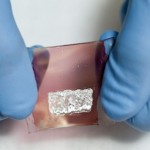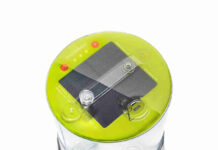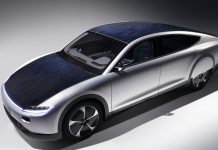 Last September the Stanford University developed a pressure-sensitive artificial skin which is so sensitive that it can “feel” the weight of a butterfly.
Last September the Stanford University developed a pressure-sensitive artificial skin which is so sensitive that it can “feel” the weight of a butterfly.
As part of a goal to create the “super artificial skin,” Stanford researcher Zhenan Bao is now giving to artificial skin the ability to detect chemical and biological molecules. She has also developed a new, stretchable solar cell that can be used to power the artificial skin, opening up the possibility of an artificial skin for robots to detect dangerous chemicals or diagnose medical conditions with a touch. With help of the solar cell the artificial skin could also detect the chemical substances in either liquid or vapor.
To enhance the artificial skin and give it the ability to sense a particular biological or chemical molecule, it needs to be coated with another molecule that will bind with the biological or chemical molecules when they come in contact. The researchers have already had success with the artificial skin concept by detecting a certain kind of DNA and they’re now working on using the technique to detect proteins with an eye on medical diagnostics applications. “For any particular disease, there are usually one or more specific proteins associated with it – called biomarkers – that are akin to a ‘smoking gun,’ and detecting those protein biomarkers will allow us to diagnose the disease,” Bao said.
To allow the sensors to be lighter and more mobile, the researchers are looking to do away with the need for batteries or an electrical outlet by using stretchable solar cell concept. This solar cell is made of an accordion-like wavy microstructure that is covered with a liquid metal electrode that conforms to the surface in both its relaxed and stretched states. The solar cell can be stretched up to 30 percent beyond their original length and snap back, all the while generating enough electricity to enable the sensors to transmit their data to a computer for processing. The solar cell can also be designed to stretch along two axes, which would allow it to be used in fabric for clothing. The stretchable solar cell ability to bond to curved surfaces without cracking or wrinkling also makes it useful for a wide range of applications, such as car exteriors, lenses, and buildings.
Bao says that with help of solar cell the super artificial skin could provide robots and other devices with capabilities beyond those of human skin. A research paper by Bao, describing the Stanford team’s stretchable solar cell concept, will appear in an upcoming issue of Advanced Materials.



